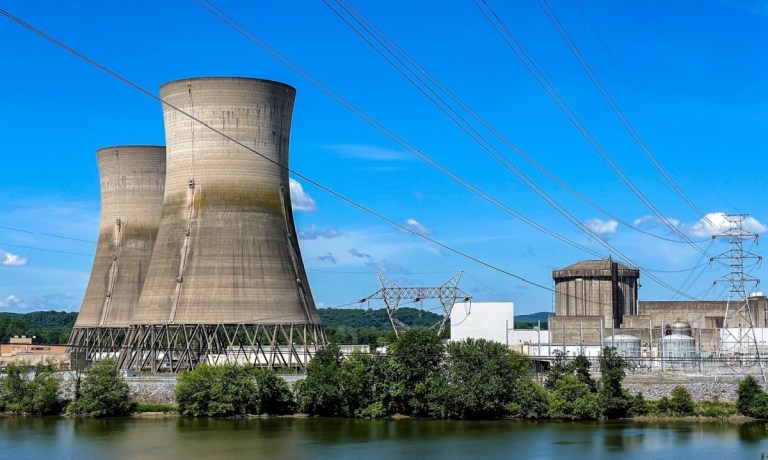
Microsoft has ignited a potential new energy market by signing a 20-year agreement to reactivate the dormant Three Mile Island nuclear plant in Pennsylvania.
The move marks the first time a major tech company has directly invested in nuclear power generation to fuel its artificial intelligence (AI) operations. As the AI sector booms, it’s creating unprecedented demand for stable, high-capacity power sources.
“Microsoft’s decision to restart operations at the Three Mile Island nuclear facility highlights the massive energy needs that come with scaling AI advancements,” Labhesh Patel, CEO, and co-founder of Autonomys, a company building decentralized AI infrastructure, told PYMNTS. “As AI systems become more integral to the economy and technological progress, their energy demands are rising.”
The 835-megawatt reactor at Three Mile Island operates independently from Unit 2, which melted down in the 1970s.
The partnership between Microsoft and Three Mile Island could herald a wave of deals between tech giants and energy companies. Benjamin Lee, an engineering professor at the University of Pennsylvania, suggested that tech companies are turning to nuclear power as renewable energy struggles to meet growing data center demands.
He told PYMNTS, “There is an increasing realization … that renewable energy installations cannot keep pace with data center construction, raising questions about whether net zero is possible.”
Lee explained that intermittency issues with wind and solar energy are driving interest in nuclear power: “Because large batteries and rescheduling computation is daunting, data center operators are increasingly considering carbon-free nuclear energy.”
However, he cautioned that nuclear power faces economic challenges: “Companies in the United States rarely build new nuclear power plants and, when they do, these projects are significantly delayed and over budget.”
Looking ahead, Lee is “pessimistic about investments in wind and solar alone,” suggesting, “Data centers would benefit enormously from technological advances in energy storage and batteries as well as efficient, modular, and safe nuclear reactors.”
This trend extends beyond just one company. “As fields like healthcare and logistics grow more dependent on AI technologies, their energy usage spikes,” Patel said. “Meanwhile, the urgency to cut carbon emissions and combat climate change intensifies.”
With global AI spending projected to reach $300 billion by 2026, according to IDC, the race for energy resources among tech companies could become as fierce as the competition for AI talent and market share.
Recent studies have shed light on the energy consumption of large language models (LLMs), which are at the forefront of AI advancements. For example, training GPT-3, a predecessor to the current GPT-4, was estimated to consume around 1,287 MWh, equivalent to the annual energy usage of about 120 U.S. households. More recent models like GPT-4 are believed to consume even more, though exact figures aren’t publicly available.
However, AI is also being leveraged to optimize energy consumption. DeepMind’s AI system, when applied to Google’s data centers, reduced the energy used for cooling by up to 40%. Similarly, Microsoft has been using AI to improve the energy efficiency of its data centers, achieving power usage effectiveness (PUE) ratings as low as 1.12, where 1.0 is perfect efficiency.
Microsoft’s plan to reopen Three Mile Island for AI energy needs highlights broader challenges in powering advanced technologies, Donatas Karčiauskas, CEO of Exergio, a company that creates AI solutions for energy performance, told PYMNTS.
“Data centers are still one of the biggest contributors to global carbon emissions, at a scale similar to the aviation industry,” he said. He said nuclear power alone cannot meet AI’s growing energy demands. “We will need to find other energy sources, from geothermal to hydrogen, and other ways to reduce energy waste.”
Karčiauskas noted the urgency of the situation, explaining, “It’s not a surprise Microsoft is looking for ways to reopen certain power plants, as new ones take more than 10 years to build.”
However, he sees potential in AI to address these challenges: “The latest machine learning algorithms are also used to reduce energy waste up to 20%,” suggesting a “huge potential gap for AI-based energy saving solutions in data centers.”
For all PYMNTS AI coverage, subscribe to the daily AI Newsletter.